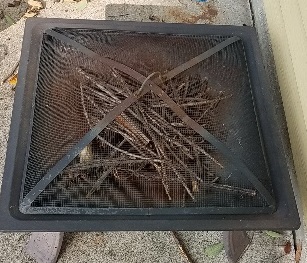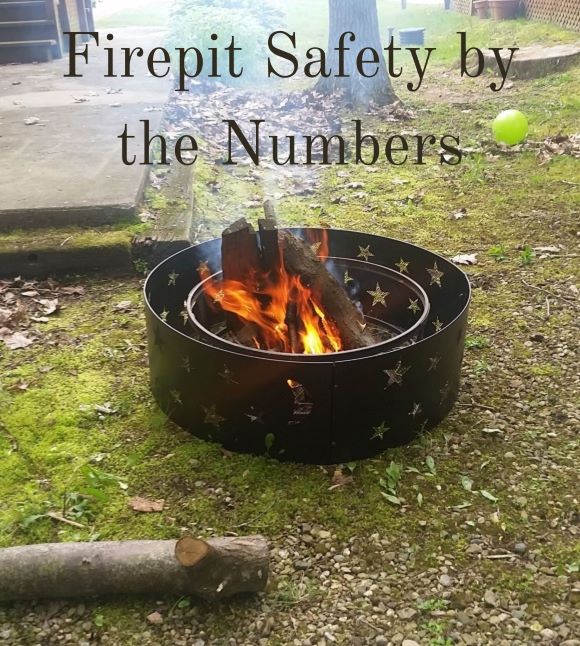 It’s starting to get cooler outside and with many wanting to extend their time outside – what better way than a firepit in the backyard? Turning on the news though with most of the Western seaboard burning and it might just give you pause…
It’s starting to get cooler outside and with many wanting to extend their time outside – what better way than a firepit in the backyard? Turning on the news though with most of the Western seaboard burning and it might just give you pause…
For more Fire Safety related to current events: Campfire Safety; Making your house Fire Wise; Wildfires & your house

Fire Pit Safety by the Numbers:
- 0 – ZERO: No wind is the ideal amount – with that, a very light breeze is doable but watch some of the other numbers plus consider using one with an ember guard aka mesh (like the pit shown on top), or make sure the wood stays below the top edge
- 1/2 to 3/4 aka 50 – 75%: Don’t fill the entire pit out to the edges or above the top – best to keep 25 to 50% around the sides clean & keep the wood below the top edge by a few inches (i.e. logs should be on 50 to 75% of the width of the pit)
- 1 – ONE: One foot is the maximum ideal depth of the fire pit. Sure you can have a nicely landscaped masonry one that is 24″ to 32″ tall (for sitting on) but the depth of the burn pit should only be a foot deep.
- 2 – TWO: Keep two gallons of water handy to put the fire out at the end of the night or lord forbid to stop an ember that blew out from catching something on fire out.
- 3 – THREE: Keep at least 3 feet clear around the outside of the ring for a nice walking area
- 4 – FOUR: Trying to design a nice masonry one with seating built around it? If so leave 4′ between the outside edge to the masonry bench
- 5 – FIVE: Make sure 5′ around the firepit is cleared of combustible materials like leaves
- 10 – TEN: Minimum distance to keep fire pit from sides of your house, any trees (including overhanging branches), decks, etc…
- 15 – FIFTEEN: Recommended minimum distance from tents, tree houses, or play area(s)
- 400 & 800: 800° is essentially the temperature the fire pit can reach – with a free standing unit the temperature underneath / radiated down ranges from 200° to 400° which is more than the melt point for composite decks, etc…
Additional Reminders:
- Never put a fire pit on a deck or other combustible surface (see exception above)
- For composite & wood decks – there is an exception but that requires using a special pad / barrier underneath
- For grass – that heat is enough to kill it in a spot & possibly allow it to ignite – you can try using a pad like above (don’t leave it down for to long or you will still kill the grass) or maybe better yet, dig out an area for the pit & line it with bricks or gravel if you like to use the pit a lot
- Never put a fire pit under any type of cover (i.e. porch) – yes, that means even if there is 10′ or more above it
- Freestanding pits like the one shown on top – make sure the legs are durable, straight & placed on a level area
- Make sure you put the fire completely out before heading inside – simple rule if it is to hot to touch it is to hot to be left alone
